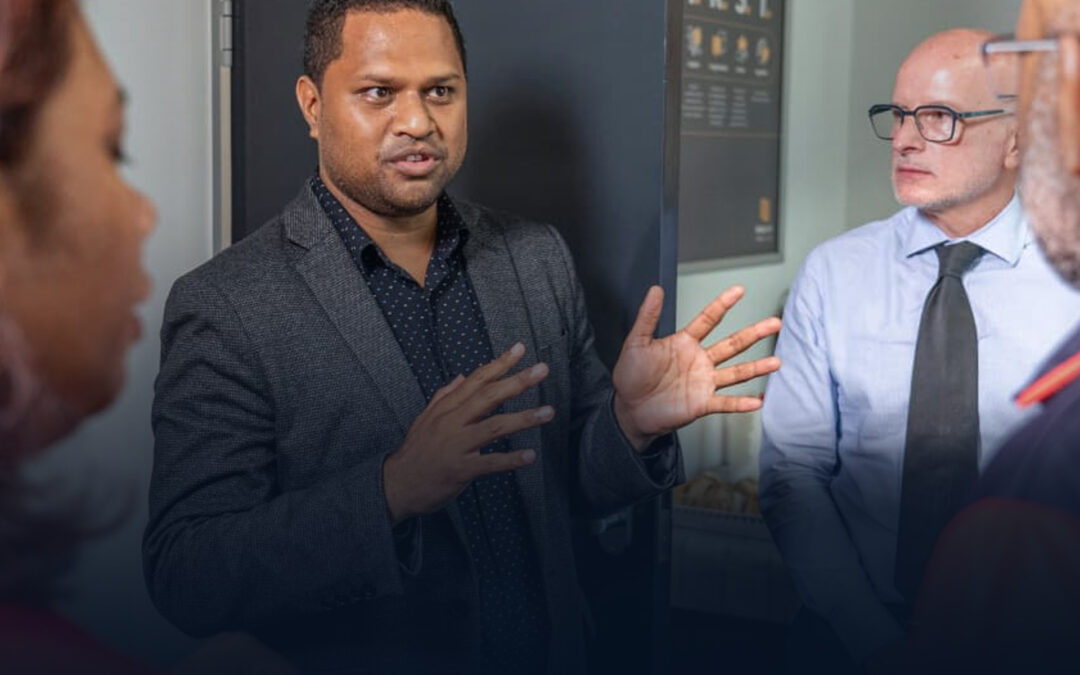In a country where access to government services has long been defined by long lines, loads of paperwork, and costly travel, the Department of Information Communications and Technology has been making quet progress towards a wholesale digitization of government services.
It’s a powerful revolution, seen only in pieces, and not fully understood.
The vision for the digital government is a transformation that aims to make life simpler, faster, and fairer for its citizens.
For years, the phrase “digital government” seemed like a distant dream. But since 2023, the Department of Information and Communications Technology (DICT) has been laying the groundwork with a strategic and deliberate approach.
DICT Secretary, Steven Matainaho says It’s a national project with a clear vision: to create a “state in a phone” where citizens can access essential services from anywhere, just with the tap of a screen.
“To get to that vision, there’s a whole lot of work that needs to be done. For systems to operate in an integrated manner, all our government systems, first of all, we have to talk about system and data hosting infrastructure. That’s cloud infrastructure,” Matainaho says.
A New Digital Foundation
The first and most crucial step has been to build the infrastructure. Since 2023, the government has been pushing agencies to migrate to a shared government cloud.This isn’t just about modernising a few departments; it’s a massive, whole-of-government uplift. By the end of 2024, nearly 90% of government agencies had been onboarded, standardising everything from websites to email domains.
This move is designed to break down the silos that have traditionally kept agencies from communicating, ensuring systems can finally talk to each other.
“The government builds roads, and businesses and citizens use that piece of infrastructure. Digital Public Infrastructure is the same, Matainaho explains.”
This foundational work is supported by a robust legal and policy framework. The Digital Government Act 2022 and the Digital Government Plan 2023-2027 provide the clear rules needed for this digital transformation. These policies address three critical pillars:
- Digital Infrastructure: Ensuring a secure and reliable hosting and connectivity environment.9
- Data Governance: Establishing clear standards for how citizens’ data is collected, stored, and shared.10
- Cybersecurity: Protecting government systems and citizen information from a growing number of cyber threats.11
PNG’s progress in this area is already paying off. The nation has made a significant leap in the Global Cybersecurity Index, moving from Tier 5 in 2020 to Tier 3 by 2024, positioning itself as a regional leader. This is a direct result of the operationalisation of the National Cyber Security Centre and a new national cybersecurity strategy.
The Rise of Digital Services
But what does it mean for the ordinary Papua New Guinean?
With the foundations now in place, the focus has shifted to tangible services citizens can see and use. A significant achievement has been the launch of the e-government portal, known as SevisPortal, which is the first step towards a single online platform for all citizen services.This pilot project, launched in late 2024, provides a central hub for services like online police clearance applications, school fee payments, and even access to academic results.It’s a game-changer that removes the need for citizens to physically visit multiple government offices, saving them time and money.
“This moment marks a key milestone in our digital transformation journey and digitally empowered society. The launch of this pilot service in our view is a huge leap towards how we as a nation engage in both public and eventually private sector.”
Building Trust, Unlocking Potential
The journey to a digital government is far from over, but the progress made since 2023 is remarkable. It’s a strategic and ambitious plan that is bringing convenience and efficiency to the lives of ordinary Papua New Guineans, proving that even in a country of immense geographical and logistical challenges, a digital future is not only possible but within reach.


